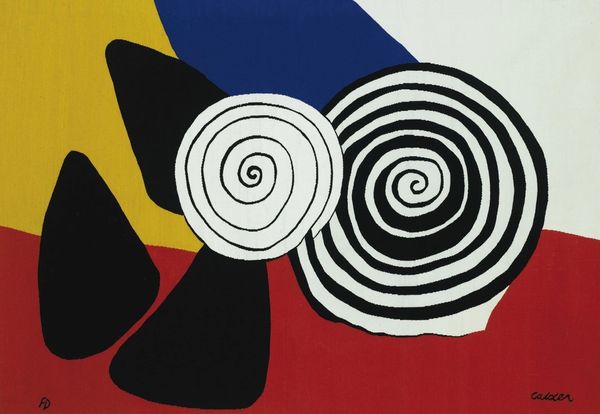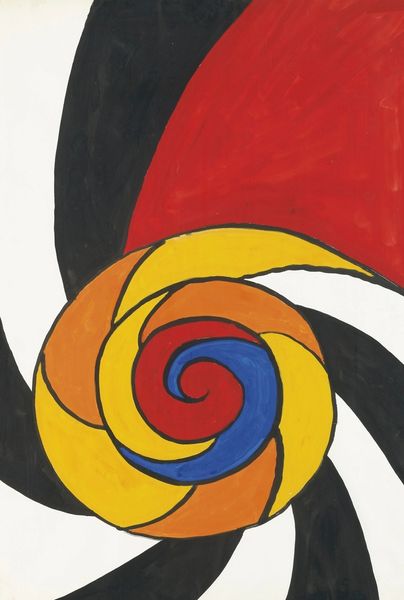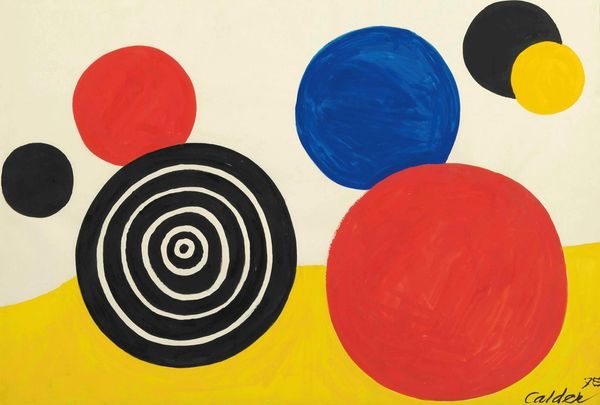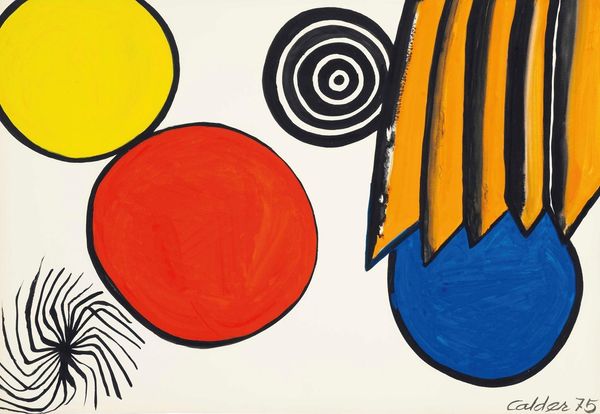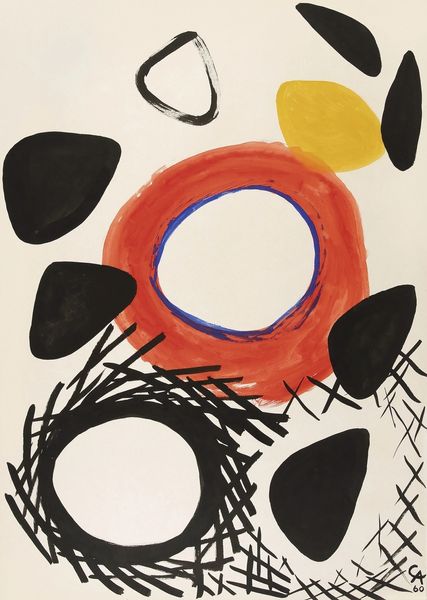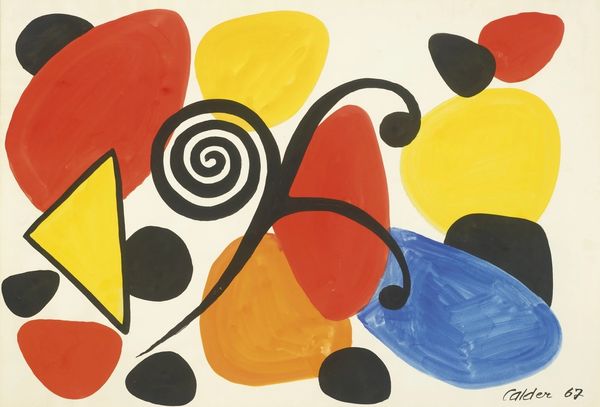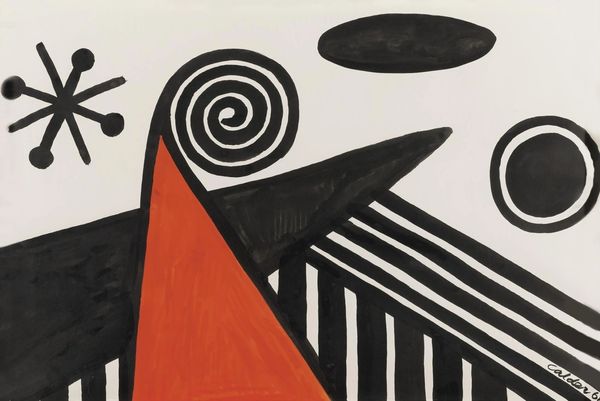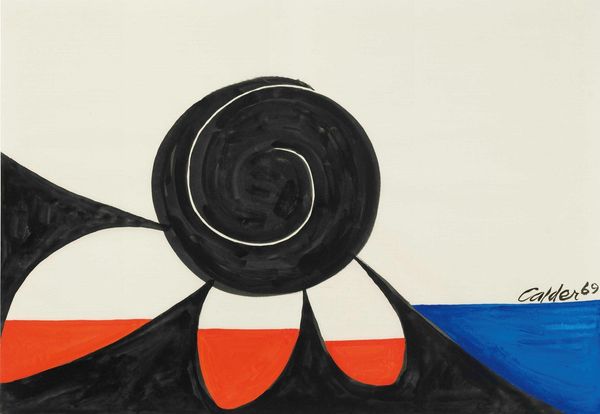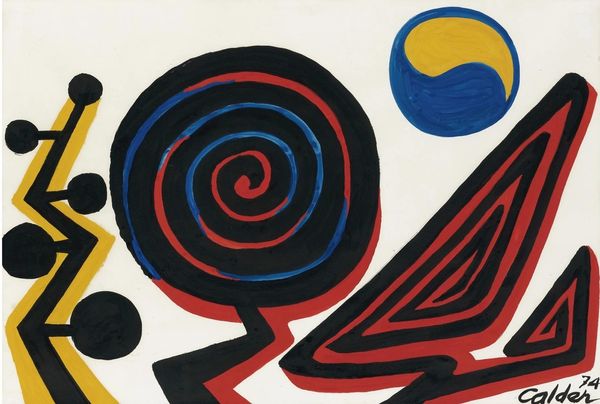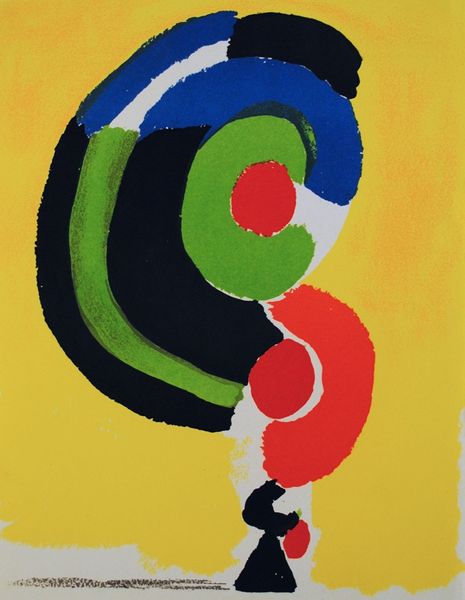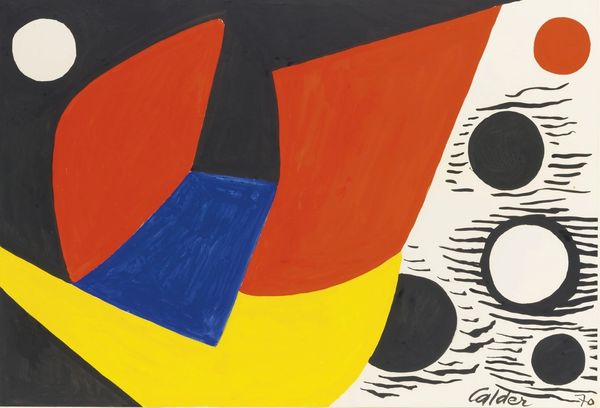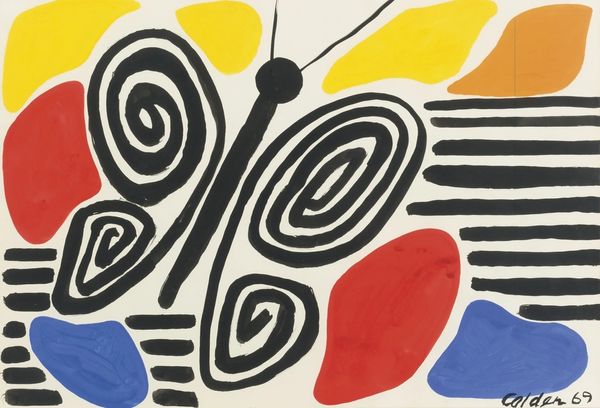
acrylic-paint
#
caricature
#
pop art
#
acrylic-paint
#
abstract
#
form
#
geometric
#
abstraction
#
pop-art
#
line
#
modernism
Copyright: Modern Artists: Artvee
Curator: Today, we're looking at Alexander Calder's "Escargot amoureux de 2 Huitres" from 1969. It's an acrylic painting featuring the artist's characteristic playful abstraction. Editor: Well, right off the bat, it feels incredibly light, doesn't it? The orange background paired with these graphic shapes is just so buoyant. Curator: The title is "Snail in love with two Oysters", and to me, that is so funny, because looking at the geometric shapes in the composition, you wouldn't think of it as having a relationship. I appreciate his unique visual vocabulary. He gives us just enough to ignite our imaginations. Editor: It’s funny how these hard, geometric forms create such a whimsical vibe. It almost reads as if he is thinking of how forms come together with such minimalist strokes; you can sense Calder thinking of raw materiality by allowing his hand to show, letting some of the forms and backgrounds appear less perfect or precise. Curator: Exactly. It's more like visual poetry than representational art, allowing us to create our narratives. These curving lines are lovely. To me, they suggest an optimistic energy, a dynamic sensibility that’s always engaging. Editor: Absolutely. You know, considering the socio-political upheaval of 1969, there is a powerful statement about challenging art traditions—making artworks that appear simple in theory, but very complicated to pull off when we discuss its execution. The artist chose materials that were accessible but equally challenging, too. Curator: Right. "Escargot amoureux de 2 Huitres" feels like a little spark of joy, it gives us permission to find pleasure in the unexpected, in art, or everyday life. Editor: It truly embodies the innovative ethos of that time, prompting us to appreciate the process of creation as much as the final product. It has a lot to say if you examine the work from a production and historical framework.
Comments
No comments
Be the first to comment and join the conversation on the ultimate creative platform.
